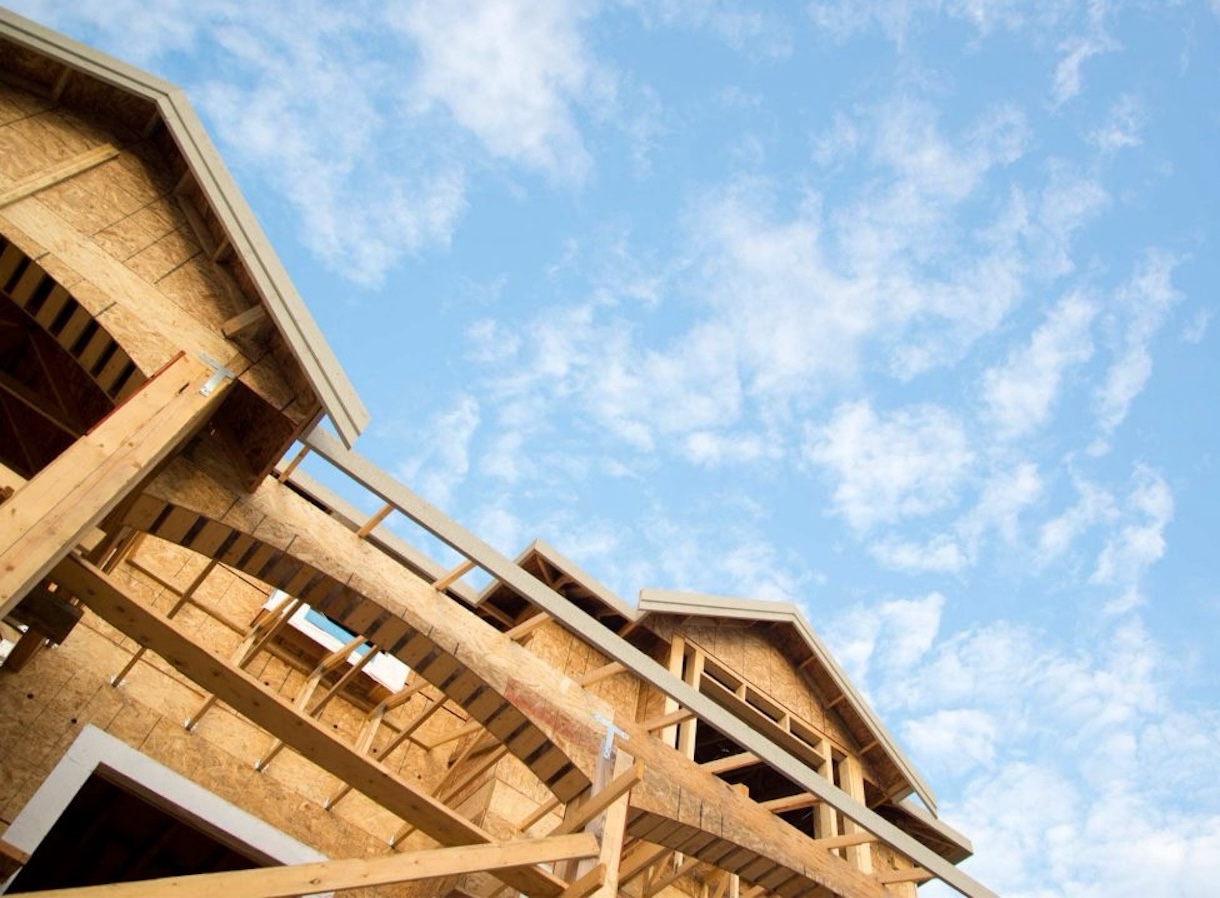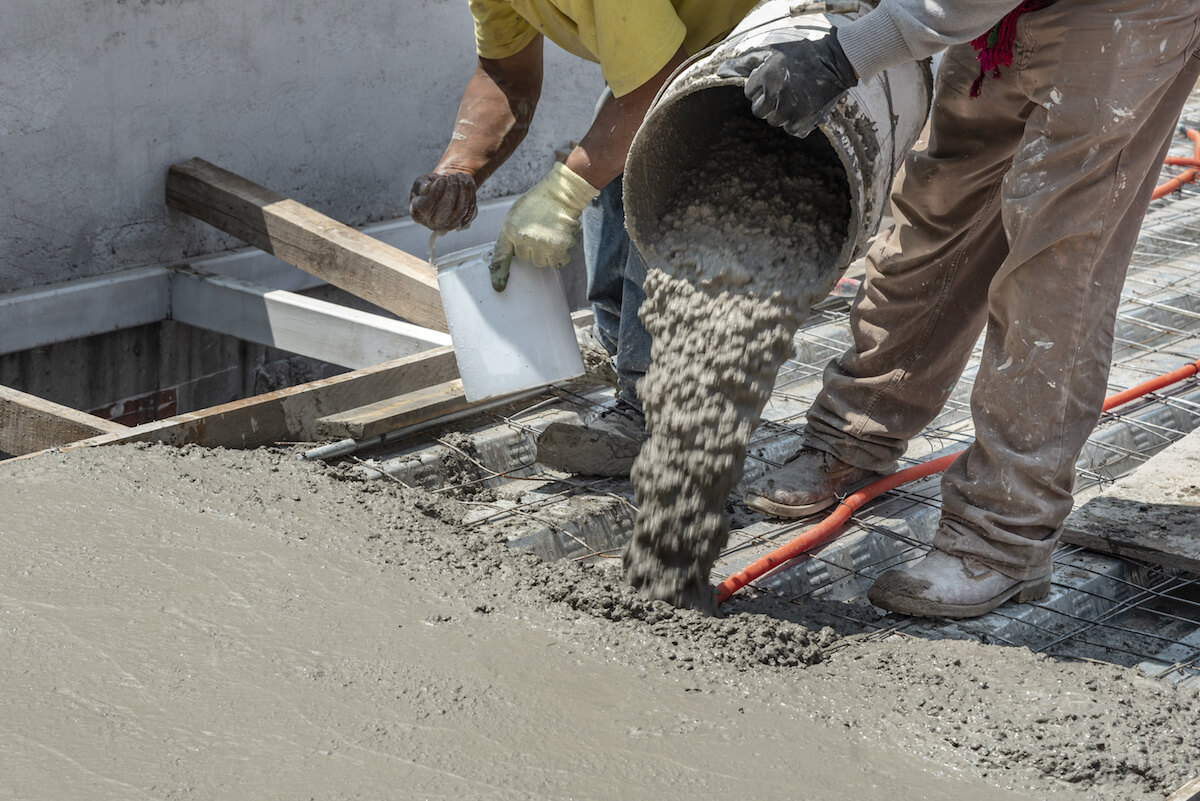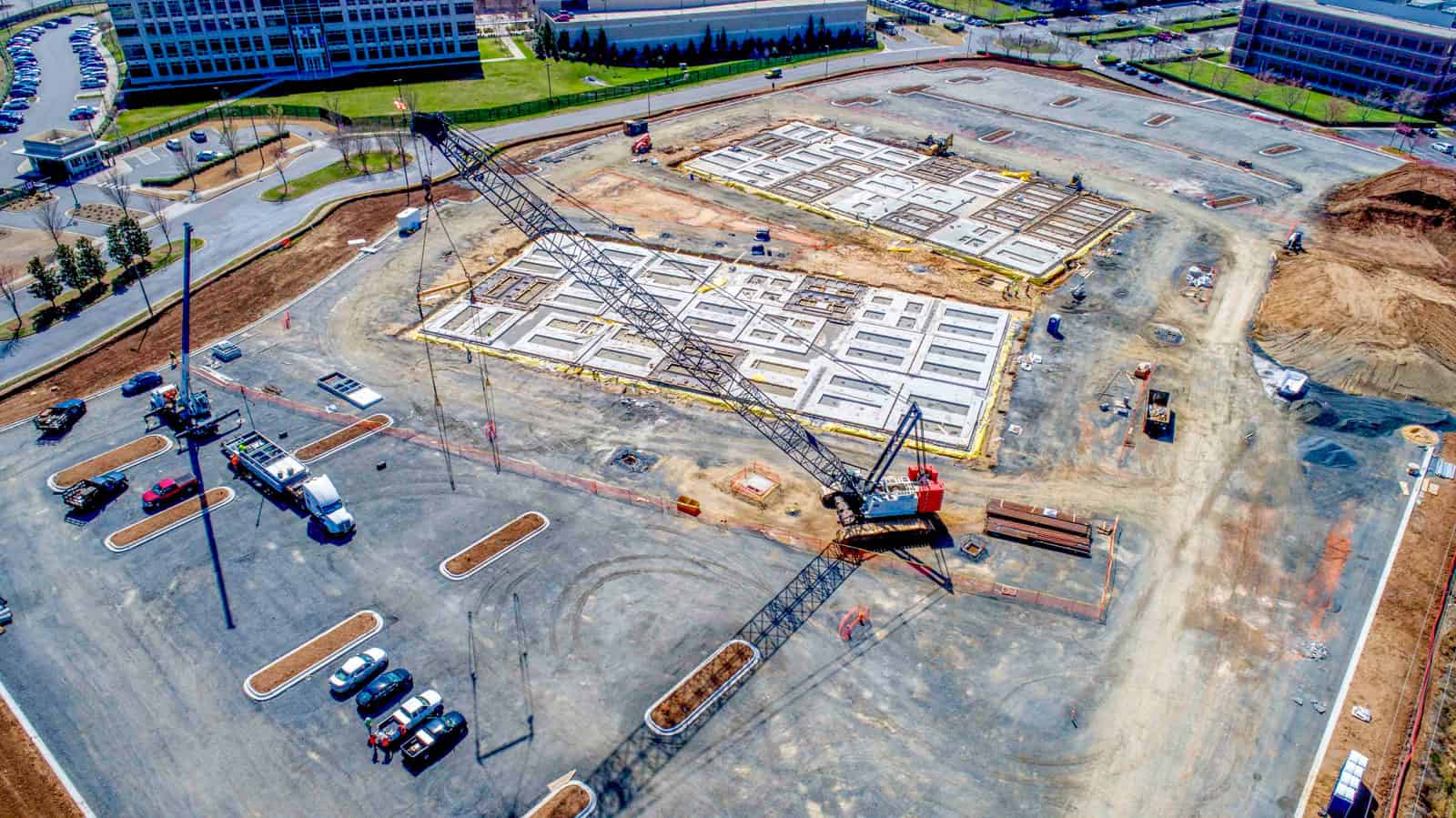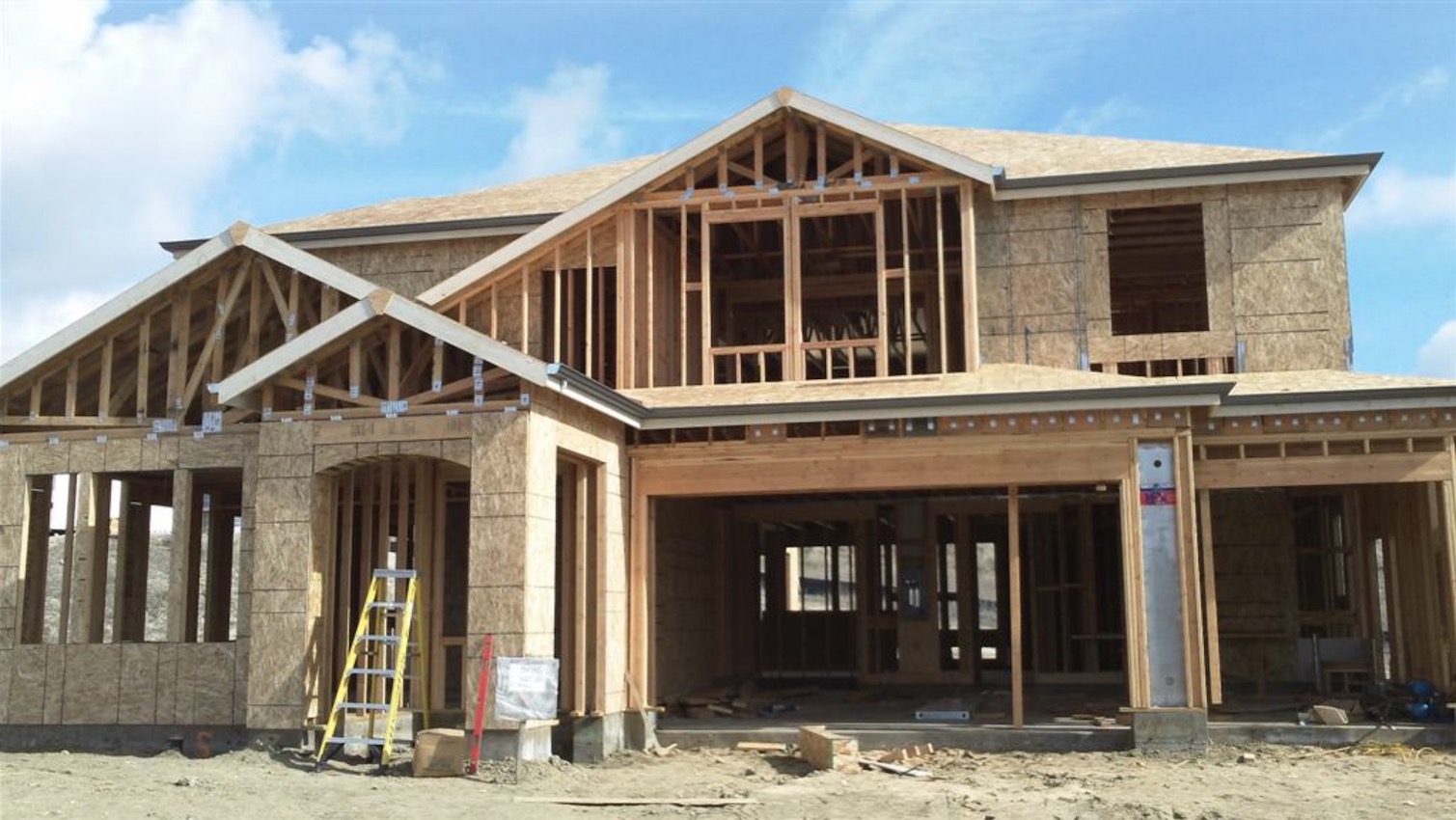Home>diy>Building & Construction>When Does Pre-Construction Take Place?


Building & Construction
When Does Pre-Construction Take Place?
Modified: October 18, 2024
Discover when pre-construction takes place in building construction. Learn about the important stages and timelines involved.
(Many of the links in this article redirect to a specific reviewed product. Your purchase of these products through affiliate links helps to generate commission for Storables.com, at no extra cost. Learn more)
Introduction
In the world of construction, proper planning and preparation are essential for a successful project. This is where pre-construction comes into play. Pre-construction refers to the phase of a construction project that takes place before any physical work begins on-site. It involves a series of crucial tasks and decisions that sets the foundation for the entire construction process.
During the pre-construction phase, various factors are taken into consideration, such as the project’s feasibility, design development, budgeting, scheduling, and procurement. Each of these factors plays a vital role in ensuring that the project is executed smoothly and efficiently.
In this article, we will delve into the world of pre-construction, exploring the key factors that influence it and the processes involved.
Key Takeaways:
- Pre-construction is the foundation of a successful construction project, involving factors like budget, regulatory requirements, and site conditions. It sets the stage for efficient planning, clear communication, and effective coordination among stakeholders.
- The pre-construction phase encompasses crucial processes such as permit acquisition, site preparation, and subcontractor selection. It lays the groundwork for well-managed scheduling, accurate cost estimation, and seamless collaboration, ensuring a smooth transition into the construction phase.
Read more: What To Expect At Pre-Construction Meeting
Factors Affecting Pre-Construction
Before diving into the specific processes of pre-construction, it is important to understand the various factors that can impact this phase. These factors can vary depending on the type and complexity of the project, as well as the location and specific requirements. Here are some of the major factors that influence pre-construction:
- Project Size and Scope: The size and scope of the project will determine the level of planning and preparation required during pre-construction. Larger projects with complex designs and multiple components may require more extensive coordination and analysis.
- Budget: The budget allocated for the project will dictate the resources available for pre-construction activities. Adequate budgeting is crucial for conducting thorough site investigations, engaging design professionals, and securing necessary permits and approvals.
- Regulatory Requirements: Construction projects are subject to various regulatory requirements, including zoning regulations, building codes, and environmental regulations. Understanding and complying with these requirements is essential during pre-construction to avoid delays and penalties.
- Site Conditions: The physical characteristics of the construction site, such as topography, soil conditions, and existing structures, can impact the pre-construction phase. Site investigations and surveys are conducted to assess these conditions and determine their potential impact on the project.
- Stakeholder Communication: Effective communication and coordination among project stakeholders, including the owner, architect, engineers, and contractors, play a vital role in pre-construction. Regular meetings and clear communication channels ensure that everyone is on the same page and can address any potential issues proactively.
- Market Conditions: Market conditions, such as the availability and cost of labor and materials, can affect the pre-construction phase. It is essential to consider these factors when developing project schedules and budgets.
- Risks and Constraints: Pre-construction involves identifying and mitigating potential risks and constraints that may arise during the construction phase. This includes assessing potential safety hazards, impact on neighboring properties, and logistical challenges.
By understanding and addressing these factors, construction professionals can effectively plan and execute the pre-construction phase, setting the stage for a successful construction project.
Permit and Approval Processes
One of the crucial steps in pre-construction is obtaining the necessary permits and approvals from the relevant authorities. These permits and approvals ensure that the construction project complies with local regulations and standards. Here are the key components of the permit and approval processes:
- Zoning and Planning: Before any construction can take place, it is essential to determine if the proposed project complies with the local zoning regulations and land-use requirements. This involves submitting plans and documents to the planning department and attending public hearings if necessary.
- Building Permits: Building permits are typically required for all new construction, major renovations, and changes in occupancy. The permit process involves submitting detailed construction plans, specifications, and other necessary documents to the building department for review and approval.
- Environmental Permits: Depending on the project’s location and environmental impact, additional permits may be required. These can include permits for stormwater management, wetlands protection, air quality control, and hazardous material handling.
- Utility Approvals: For projects requiring connections to utility services such as water, sewer, and electricity, approvals from the respective utility companies may be necessary. This ensures that the infrastructure is in place to support the construction activities.
- Special Permits: Certain types of construction projects, such as those involving historic buildings, high-rise structures, or public facilities, may require special permits. These permits may involve additional review processes, public hearings, and preservation guidelines.
To navigate through these permit and approval processes effectively, it is crucial to engage with professionals who understand the local regulations and have experience in obtaining permits. This can include architects, engineers, and construction consultants who can assist in preparing the necessary documentation, coordinating with the authorities, and addressing any concerns raised during the review process.
It is important to note that permit and approval processes can vary significantly depending on the jurisdiction and the specific project requirements. Therefore, it is essential to conduct thorough research, engage with the relevant authorities early on, and allow sufficient time for obtaining permits and approvals in the pre-construction phase.
Site Preparation and Clearing
Once the necessary permits and approvals have been obtained, the next step in the pre-construction phase is site preparation and clearing. This involves preparing the construction site for the upcoming construction activities. Here are the key aspects of site preparation and clearing:
- Demolition and Removal: If there are existing structures on the site that need to be cleared, such as old buildings or foundations, they will need to be demolished and removed. This may involve hiring specialized contractors and obtaining additional permits.
- Vegetation Clearing: Depending on the project’s requirements, vegetation and trees may need to be cleared from the site. This is done to make way for the construction activities and ensure proper access to the site.
- Erosion Control: Managing erosion and sedimentation is crucial during site preparation. Measures such as installing erosion control barriers, silt fences, and sediment basins help prevent soil runoff and protect nearby water bodies.
- Utility Disconnection: Any existing utility connections on the site, such as water, sewer, and electricity, may need to be properly disconnected and capped off before construction begins. This ensures the safety of the construction workers and prevents any disruptions to the surrounding infrastructure.
- Site Grading and Leveling: Site grading involves reshaping the land to achieve the desired elevation and slope. This may require the use of heavy machinery to excavate or fill areas of the site, creating a level surface for the construction activities.
- Temporary Access Roads and Fencing: To facilitate construction activities, temporary access roads and fencing may need to be installed. This allows easy movement of construction vehicles and equipment while ensuring site security and safety.
Site preparation and clearing are critical to creating a safe and efficient work environment for the construction team. Proper planning and execution of these activities help streamline the construction process and minimize any potential obstacles or delays.
It is important to note that site preparation and clearing must be conducted in compliance with local regulations and environmental guidelines. This includes proper disposal of demolition waste, adherence to erosion control measures, and protecting nearby ecosystems and water bodies.
By effectively managing site preparation and clearing, construction projects can move forward smoothly and efficiently, setting the stage for the subsequent phases of construction.
Surveying and Geotechnical Investigations
Surveying and geotechnical investigations are crucial components of the pre-construction phase. They provide essential data and analysis that inform the design and construction processes. Here is an overview of surveying and geotechnical investigations:
Surveying:
Surveying involves measuring and mapping the physical characteristics of the construction site. This data helps in defining the boundaries, topography, and existing features of the site. Surveyors use specialized equipment such as total stations, GPS, and laser scanners to collect accurate measurements.
The surveying process includes creating site plans, elevations, and cross-sections that serve as references for design and construction. It helps identify any potential constraints or challenges, such as changes in elevation, slopes, existing utilities, or property lines.
Geotechnical Investigations:
Geotechnical investigations focus on understanding the subsurface conditions of the site. This involves conducting various tests and analyses to assess the soil, rock, and groundwater properties. Geotechnical engineers and specialists perform these investigations.
The purpose of geotechnical investigations is to evaluate the stability, bearing capacity, and settlement potential of the site. This information is essential for designing the foundation system, earthwork, and other structural elements of the project.
Typical geotechnical investigations include soil borings, laboratory testing, groundwater monitoring, and analyzing geotechnical reports. This data helps determine the appropriate foundation types, excavation requirements, and soil stabilization measures.
Surveying and geotechnical investigations are intertwined processes that complement each other. The survey data helps geotechnical engineers locate and access certain areas of interest for sampling and testing.
Combining the information from both surveys and geotechnical investigations allows for accurate and efficient design and construction plans. It helps identify and mitigate potential risks and challenges early on, ensuring the project’s stability and longevity.
It is important to engage qualified surveyors and geotechnical specialists to conduct these investigations. Their expertise and analysis enable informed decision-making during the pre-construction phase, minimizing potential issues during construction and ensuring the project’s success.
Read more: What Is Pre-Commissioning In Construction
Design and Engineering
Design and engineering play a pivotal role in the pre-construction phase of a building project. This phase involves translating the project’s requirements and objectives into a detailed design plan that can be executed during construction. Here’s a closer look at the design and engineering processes:
Architectural Design:
Architectural design focuses on creating a functional and aesthetically pleasing building that meets the client’s needs and complies with local building codes and regulations. During the pre-construction phase, architects work closely with the project stakeholders to develop the initial concept and transform it into a complete set of construction documents.
These documents include architectural drawings, specifications, and other relevant details that guide the construction team in executing the design. The architectural design covers exterior and interior elements, space planning, materials, finishes, and other aspects that contribute to the overall appearance and functionality of the building.
Structural Engineering:
Structural engineering focuses on designing a safe and structurally sound building. Structural engineers work in collaboration with architects to develop the structural system that will support the building’s load, resist forces, and ensure its overall stability.
During the pre-construction phase, structural engineers analyze the architectural plans and calculate the required material strengths, dimensions, and connections for the building’s foundations, columns, beams, and other structural elements. This helps ensure that the building can withstand loads and environmental conditions such as earthquakes, wind, and snow loads.
Mechanical, Electrical, and Plumbing (MEP) Engineering:
MEP engineering focuses on designing the mechanical, electrical, and plumbing systems of the building. This includes systems for heating, ventilation, air conditioning (HVAC), electrical power and lighting, plumbing, and fire protection.
During the pre-construction phase, MEP engineers collaborate with architects and other design professionals to integrate the MEP systems seamlessly into the building’s design. They conduct load calculations, equipment selection, and system sizing to ensure optimal performance, energy efficiency, and compliance with relevant codes and standards.
Design and engineering during the pre-construction phase involve thorough analysis, coordination, and collaboration among the design team. It is crucial to engage experienced architects and engineers who specialize in the specific requirements of the project type, whether it’s residential, commercial, industrial, or institutional.
By investing time and effort into the design and engineering processes during pre-construction, construction projects can achieve efficient and cost-effective solutions that meet client expectations while ensuring compliance with regulations and industry best practices.
Pre-construction typically takes place after the design and planning phase, but before actual building begins. It involves site preparation, obtaining permits, and finalizing construction plans.
Budgeting and Cost Estimation
Budgeting and cost estimation are integral parts of the pre-construction phase. Accurate budgeting and cost estimation help determine the financial feasibility of the project, allocate resources effectively, and establish a foundation for successful construction. Here’s an overview of the budgeting and cost estimation process:
Project Scope and Requirements:
The first step in budgeting and cost estimation is understanding the project’s scope and requirements. This includes identifying the size, complexity, and specific features of the building project. It also involves assessing any unique challenges or special considerations that may impact the cost, such as the need for specialized materials or equipment.
Material and Labor Costs:
One of the primary components of cost estimation is analyzing the material and labor costs involved in the construction project. This entails researching current market prices for construction materials, equipment, and labor rates for various trades.
Factors such as fluctuations in material costs, availability of skilled labor, and market demand can influence the overall cost estimation. It’s important to consider both the initial costs and potential long-term operational costs when budgeting for materials and labor.
Contingency and Risk Assessment:
Uncertainty is inherent in any construction project, and it’s crucial to account for potential risks and unforeseen circumstances in the budgeting and cost estimation process. This is typically done by adding a contingency fund to the overall budget.
Contingency funds serve as a buffer to cover unexpected expenses, such as design changes, unforeseen site conditions, or delays. A thorough risk assessment helps identify potential risks and allows for appropriate allocation of funds to mitigate those risks.
Professional Fees and Overhead Costs:
In addition to material and labor costs, budgeting for professional fees and overhead costs is essential. This includes fees for architects, engineers, consultants, legal services, permits, insurance, and other administrative expenses.
It’s important to allocate funds for these professional services to ensure that the project is properly planned, designed, and executed. Overhead costs, such as office space, utilities, and project management software, should also be accounted for in the budget.
Monitoring and Control:
Budgeting and cost estimation are not static processes; they require ongoing monitoring and control throughout the construction project. Regular cost tracking, comparison of actual costs to estimated costs, and adjusting the budget as needed are essential to keep the project on track financially.
By carefully considering project scope, material and labor costs, contingencies, professional fees, and ongoing monitoring, budgeting and cost estimation during the pre-construction phase provide a solid financial framework for the construction project. It helps ensure that the project is financially sustainable and completed within the allocated budget.
Scheduling and Timeline Development
Scheduling and timeline development are vital components of the pre-construction phase. Effective scheduling ensures that all tasks and activities are properly organized and sequenced, allowing for a smooth and efficient construction process. Here’s an overview of the scheduling and timeline development process:
Project Phasing:
The first step in developing a construction schedule is to break down the project into manageable phases. This involves identifying the major milestones and activities that need to be completed within each phase. For example, site preparation, foundation construction, structural framing, MEP installation, and finishing work can each be considered as separate phases.
Task Sequencing:
Once the project is divided into phases, tasks and activities within each phase must be sequenced in the most logical and efficient order. This entails identifying dependencies and determining which tasks can be performed simultaneously and which ones need to follow a specific sequence. Proper task sequencing helps prevent delays, optimize resources, and ensure that work can progress smoothly.
Duration and Resource Allocation:
Assigning durations to each task is crucial for developing an accurate timeline. This involves estimating the time needed to complete each activity based on factors such as scope, complexity, available resources, and productivity rates. Proper resource allocation, including labor, equipment, and materials, is also essential for a realistic schedule.
Constraints and External Factors:
When developing a construction schedule, it’s essential to consider any constraints or external factors that may impact the timeline. This includes site-specific conditions, availability of subcontractors, delivery of materials, and any regulatory or permit requirements that may introduce delays. Addressing these factors in the schedule helps manage expectations and ensures that potential roadblocks are taken into account.
Critical Path Analysis:
A critical path analysis is a method used to identify the sequence of tasks that determine the overall project duration. It helps identify the critical tasks that must be completed on time to prevent project delays. By focusing on the critical path, project managers can allocate resources and manage priorities effectively to stay on schedule.
Regular Monitoring and Adjustments:
Once the schedule is developed, it is important to regularly monitor progress and make adjustments as needed. This involves tracking the actual progress of tasks and comparing it to the planned schedule. If any deviations or delays are identified, appropriate measures can be taken, such as rescheduling tasks, allocating additional resources, or re-sequencing activities to keep the project on track.
Comprehensive scheduling and timeline development during the pre-construction phase helps set realistic expectations, improve efficiency, and minimize delays. By carefully considering project phasing, task sequencing, resource allocation, constraints, and critical path analysis, construction projects can be effectively planned and executed within the allocated time frame.
Procurement and Subcontractor Selection
Procurement and subcontractor selection are key aspects of the pre-construction phase. These processes involve acquiring the necessary materials, equipment, and services for the construction project. Effective procurement and subcontractor selection play a critical role in ensuring the project’s success. Here’s an overview of these processes:
Material and Equipment Procurement:
Procuring the required materials and equipment is essential for the construction project. This involves identifying the specific items needed based on the project’s design and specifications. The procurement process includes activities such as sourcing suppliers, obtaining price quotes, reviewing product specifications, and issuing purchase orders.
Factors to consider during material and equipment procurement include the quality of the products, pricing, availability, and delivery schedules. It’s important to work with reliable suppliers that can meet the project’s requirements within the desired timeframe and budget.
Subcontractor Selection:
In addition to procuring materials and equipment, pre-construction also involves selecting subcontractors for specialized tasks. Subcontractors are typically hired to perform specific trades or services, such as electrical work, plumbing, roofing, or HVAC installation.
Subcontractor selection involves evaluating potential subcontractors based on their experience, qualifications, track record, references, and the scope of work required. It is crucial to assess subcontractors’ capabilities to ensure they have the necessary expertise, skills, and resources to complete the assigned tasks efficiently and to the desired quality standards.
During the subcontractor selection process, it’s important to communicate project requirements, expectations, and the scope of work clearly. This helps establish effective working relationships and ensures that subcontractors are aligned with the project’s goals and objectives.
Contract Management:
Once materials and subcontractors have been selected, the pre-construction phase also involves managing the contractual aspects of these relationships. Contracts should clearly define the scope of work, deliverables, timelines, payment terms, and any specific terms and conditions.
Proper contract management ensures that all parties understand their responsibilities and obligations, minimizes disputes, and provides a framework for resolving issues that may arise during the construction process.
It’s important to maintain open lines of communication with suppliers and subcontractors throughout the pre-construction phase. Regular coordination and collaboration help ensure that all parties are aligned, changes are communicated effectively, and potential issues are addressed proactively.
By carefully managing procurement and subcontractor selection during the pre-construction phase, construction projects can secure the necessary materials, equipment, and services from reliable sources. This sets the stage for a smooth and efficient construction process, leading to successful project delivery.
Pre-Construction Meetings and Coordination
Pre-construction meetings and coordination are essential for ensuring effective communication and collaboration among all project stakeholders. These meetings serve as a platform for discussing project requirements, addressing concerns, and establishing a clear understanding of roles and responsibilities. Here’s an overview of pre-construction meetings and coordination:
Project Kickoff Meeting:
The project kickoff meeting marks the official start of the pre-construction phase. This meeting brings together the project owner, design professionals, construction team, and other key stakeholders. The purpose of this meeting is to establish project objectives, review project plans and specifications, and set expectations for the construction process.
The kickoff meeting provides an opportunity for everyone to align their understanding of the project scope, timeline, budget, and quality standards. It also allows for the clarification of any ambiguities and the identification of potential challenges or constraints.
Trade Contractor Meetings:
Trade contractor meetings involve coordinating with various subcontractors and trade specialists who will be involved in the construction project. These meetings may be held collectively or individually, depending on the size and complexity of the project.
The purpose of these meetings is to review the project plans and specifications specific to each trade, address any concerns or conflicts, and ensure a clear understanding of the scope of work. It also provides an opportunity for subcontractors to collaborate and coordinate their activities to avoid clashes and delays.
Design Coordination Meetings:
Design coordination meetings are held to facilitate collaboration among the design team, including architects, engineers, and consultants. These meetings focus on ensuring that the design plans are cohesive, accurate, and ready for construction.
During design coordination meetings, potential clashes or conflicts between different design elements are identified and resolved. It may involve adjusting dimensions, locations of utilities, or material selections to ensure compatibility and functionality. These meetings also provide an opportunity to address design-related questions and make any necessary revisions to the plans before construction begins.
Regular Progress Meetings:
Throughout the pre-construction phase, it is important to schedule regular progress meetings to keep all stakeholders informed of the project’s status and address any emerging issues. These meetings typically involve project managers, construction managers, subcontractors, and other relevant team members.
During progress meetings, updates on the procurement process, construction schedule, budget, and any other relevant matters are discussed. It also provides an opportunity to track and evaluate progress, adjust schedules or resource allocations if needed, and ensure that the project remains on track.
Documentation and Communication:
Effective communication and documentation are integral to pre-construction meetings and coordination. It is important to take detailed notes during meetings and distribute meeting minutes to all relevant parties. This ensures that all decisions, actions, and responsibilities are clearly communicated and documented for reference.
Collaboration tools and project management software can be utilized to facilitate seamless communication and coordination among team members. These tools provide a centralized platform for sharing project files, tracking progress, and maintaining clear lines of communication.
By conducting pre-construction meetings and fostering effective coordination among all stakeholders, construction projects can minimize miscommunication, streamline processes, and preemptively address potential issues. This sets the foundation for a successful construction phase and ultimately leads to a high-quality and timely project delivery.
Conclusion
The pre-construction phase is a crucial component of any construction project. It lays the groundwork for successful project execution by addressing key factors and processes that impact the construction process. From securing permits and approvals to coordinating with subcontractors and developing schedules, pre-construction sets the stage for a well-planned and efficient construction project.
During the pre-construction phase, factors such as project size and scope, budget, regulatory requirements, and site conditions are carefully considered. This helps in making informed decisions and ensuring that the project meets all legal, financial, and operational requirements.
The procurement of materials, selection of subcontractors, and development of detailed designs and engineering plans help establish a strong framework for construction activities. The coordination of various stakeholders through pre-construction meetings fosters collaboration, clear communication, and the resolution of any potential issues or conflicts early on.
Moreover, pre-construction paves the way for effective scheduling and timeline development. By identifying project phasing, sequencing tasks, allocating resources, and accounting for potential constraints, construction projects can be executed within the desired timeframe and budget.
In conclusion, the pre-construction phase is an essential period that requires careful planning, coordination, and decision-making. All the necessary groundwork, such as obtaining permits, clearing the site, conducting surveys and investigations, and selecting subcontractors, is established during this phase. By investing time and effort into the pre-construction phase, construction projects can lay a solid foundation for success, ensuring a smooth transition into the construction phase.
From start to finish, the pre-construction phase sets the trajectory for a well-managed and successful construction project. Attention to detail, effective communication, and collaboration among all project stakeholders form the pillars of this critical phase, ultimately leading to the delivery of a high-quality, cost-effective, and timely construction project.
Frequently Asked Questions about When Does Pre-Construction Take Place?
Was this page helpful?
At Storables.com, we guarantee accurate and reliable information. Our content, validated by Expert Board Contributors, is crafted following stringent Editorial Policies. We're committed to providing you with well-researched, expert-backed insights for all your informational needs.














0 thoughts on “When Does Pre-Construction Take Place?”